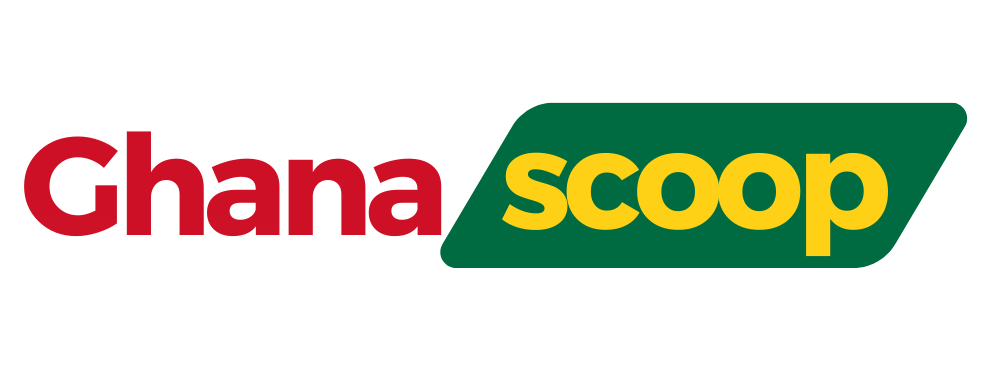Key Takeaways
- Assess organizational needs through collaborative approaches to identify skill gaps and align resources with strategic priorities for effective capacity building.
- Develop tailored training programs that address unique challenges and integrate personalized learning to enhance engagement and knowledge retention.
- Leverage technology by utilizing virtual classrooms, mobile learning, and gamified elements to create flexible and engaging training experiences.
- Foster a culture of continuous improvement by implementing feedback loops, recognizing contributions, and encouraging innovation and collaboration among teams.
- Measure impact through qualitative and quantitative assessments to inform future strategies and ensure responsiveness to evolving challenges.
Understanding Capacity Building: A Foundation for Success
Capacity building serves as the backbone of sustainable success, as it empowers individuals and organizations to enhance their skills and resources effectively. By prioritizing capacity building, you lay a solid foundation for organizational growth, enabling teams to adapt to changing environments and meet emerging challenges. It’s not just about training; it’s about fostering a culture of continuous improvement and learning. You should strategically assess existing capabilities and identify areas where investment is needed. This collaboration among team members encourages knowledge-sharing and innovation, ultimately driving performance. Engaging stakeholders in the process guarantees that everyone’s insights shape the approach, resulting in tailored solutions that resonate with your unique context.
Sagnarigu MP inaugurates 3-unit classroom block for Wayamba JHS
The Member of Parliament for Sagnarigu Constituency in the Northern Region, Mr Atta Issah, has inaugurated a 3-unit classroom block for Wayamba Junior High School in the Sagnarigu Municipality. The classroom block, which was estimated to cost GH¢460,000, was financed by the Member of Parliament. The construction of
Assessing Organizational Needs and Gaps
To effectively assess your organization’s needs and gaps, start by identifying skill shortages that may hinder progress. Next, evaluate how resources are allocated to guarantee they align with strategic priorities. This collaborative approach not only highlights areas for improvement but also fosters a culture of continuous development.Identifying Skill Shortages
How can organizations effectively pinpoint skill shortages that hinder their growth and productivity? Start by conducting a thorough workforce analysis to assess current capabilities against your strategic goals. Collaborate with team leaders to gather insights on existing skills and potential gaps. Utilize skill mapping to visualize where strengths lie and identify areas lacking expertise. This process not only highlights shortages but also reveals opportunities for upskilling current employees. Engage in open discussions with staff to understand their career aspirations and perceived barriers, fostering a culture of continuous improvement. By strategically pinpointing these skill shortages, you’ll create targeted capacity-building initiatives that enhance performance and drive organizational success, ensuring you stay competitive in an ever-evolving landscape.Evaluating Resource Allocation
Identifying skill shortages lays the groundwork for a deeper evaluation of resource allocation within your organization. To effectively optimize resources, you need to assess your current budget and identify gaps. Conduct a budget analysis to align spending with strategic goals. | Resource Type | Current Allocation | Optimization Potential | |——————-|——————-|———————–| | Training Programs | $50,000 | 20% increase | | Technology Tools | $30,000 | 15% decrease | | Staffing Levels | $80,000 | 10% increase |Developing Tailored Training Programs
To create effective training programs, you first need to assess your organization’s specific training needs. By customizing the learning content to address these gaps, you guarantee relevance and engagement for your team. Finally, measuring program effectiveness will help you refine your approach and maximize the impact of your training initiatives.Assessing Training Needs
When you prioritize evaluating training needs, you set the foundation for developing tailored training programs that directly address your organization’s unique challenges. Conducting a thorough training assessment through needs analysis helps you pinpoint gaps and opportunities. Here are four key steps to guide your process:- Identify Objectives: Clarify the specific skills and knowledge required to meet your goals.
- Gather Data: Use surveys, interviews, and performance metrics to collect insights from employees and managers.
- Analyze Findings: Examine the data to determine priority areas for improvement.
- Engage Stakeholders: Collaborate with key team members to guarantee buy-in and relevance.
Customizing Learning Content
After pinpointing your training needs, the next step involves customizing learning content to create impactful, tailored training programs. By integrating personalized learning approaches, you can address specific gaps and align training with your team’s unique skills and aspirations. Collaborate with stakeholders to gather insights that inform the development of adaptive content, ensuring the training resonates and engages participants effectively. This targeted strategy fosters a deeper understanding and retention of material, enhancing overall performance. Additionally, consider incorporating various learning modalities—such as interactive modules or real-world scenarios—to cater to different learning preferences. By strategically tailoring your training programs, you not only drive results but also build a culture of continuous improvement and empowerment within your organization.
Feeling bloated? These 6 foods can help reduce bloating
Feeling bloated after a meal? You’re not alone! Bloating, that uncomfortable sensation of fullness or swelling in your abdomen, often results from gas, water retention, or sluggish digestion. Whether it’s due to a heavy meal, high-sodium snacks, or fizzy drinks, this common issue can disrupt your day. The good
Measuring Program Effectiveness
While implementing tailored training programs is essential, measuring their effectiveness is equally important to guarantee they meet your objectives. To verify you’re on the right track, consider these key strategies:- Establish baseline metrics: Before training begins, identify key performance indicators to measure progress.
- Implement feedback loops: Collect participant feedback throughout the program to make real-time adjustments.
- Analyze post-training outcomes: Compare performance data before and after training to assess improvement.
- Engage stakeholders: Collaborate with team members and leadership to evaluate program relevance and impact.
Leveraging Technology for Enhanced Learning
As you explore ways to enhance learning, leveraging technology emerges as a critical strategy that can transform educational experiences. Utilizing virtual classrooms and interactive platforms allows you to create an engaging environment that fosters collaboration. Incorporating mobile learning and online resources provides learners with flexibility, ensuring they can access materials anytime, anywhere. Gamified training elements can further motivate participants, making the learning process enjoyable and effective. By integrating data analytics, you can track progress and tailor content to meet individual needs, enhancing overall engagement. Blended learning approaches combine traditional and digital methods, ensuring diverse learning styles are accommodated. E-learning tools facilitate social learning, allowing learners to collaborate digitally, share insights, and build community. Ultimately, embracing these technologies not only enriches the learning experience but also equips participants with the skills needed to thrive in an increasingly digital world.Fostering a Culture of Continuous Improvement
To truly foster a culture of continuous improvement, organizations must embrace a mindset that values feedback and encourages innovation at every level. This means actively involving leadership and empowering teams to contribute. Here are four strategies to achieve this:- Implement Feedback Loops: Regularly collect employee feedback to drive change and enhance engagement.
- Encourage an Innovation Mindset: Create an environment where new ideas are welcomed and explored, fostering creativity.
- Establish Recognition Programs: Celebrate contributions that lead to improvement, reinforcing positive behavior and motivating employees.
- Utilize Performance Metrics: Track progress with clear metrics to measure success and guide adaptability training.
Encouraging Collaboration and Knowledge Sharing
Effective collaboration and knowledge sharing are essential for releasing the full potential of your organization. By fostering team brainstorming sessions and establishing knowledge networks, you create an environment where ideas flourish. Implementing peer mentoring programs can enhance skills and facilitate open communication among team members. Utilize collaborative tools to streamline workflows and make shared resources easily accessible. Encourage participation in cross departmental projects to break down silos and promote diverse perspectives. Innovation workshops can serve as incubators for creativity, while structured feedback loops guarantee continuous improvement. Joint initiatives allow teams to pool their expertise and tackle challenges together, driving impactful results. By prioritizing these strategies, you not only enhance collaboration but also cultivate a culture of learning and adaptability. This proactive approach will position your organization to respond effectively to ever-evolving challenges, ultimately leading to sustained growth and success.Measuring Impact and Outcomes
Measuring impact and outcomes is essential for understanding the effectiveness of your capacity-building strategies. To effectively gauge progress, consider employing a structured approach that includes:- Impact Assessment: Identify how your initiatives influence stakeholders and communities.
- Outcome Evaluation: Analyze the specific results achieved against your goals.
- Data Collection: Use both qualitative analysis and quantitative measures to gather thorough insights.
- Feedback Mechanisms: Establish channels for stakeholders to share their experiences and suggestions.
Case Studies: Success Stories in Capacity Building
While many organizations implement capacity-building strategies, the true measure of success often lies in the real-world impact these initiatives have on communities. Take, for instance, a nonprofit that harnessed innovative approaches to strengthen local health services. By engaging community members in the planning process, they created tailored training programs that notably improved service delivery. This success story exemplifies how collaboration can enhance capacity and foster sustainability. Another example comes from an educational initiative that partnered with local businesses to provide mentorship for at-risk youth. Through targeted workshops, they equipped students with essential skills, leading to increased graduation rates and job placements. These case studies highlight that effective capacity building isn’t just about resources; it’s about strategic collaboration, adaptability, and community involvement. By sharing these success stories, you can inspire other organizations to adopt similar innovative approaches, ultimately driving greater impact across various sectors.Frequently Asked Questions
What Are Common Challenges in Implementing Capacity Building Strategies?
You’ll often face challenges like inadequate resource allocation and ineffective stakeholder engagement. Addressing these issues requires a strategic approach, fostering collaboration among all parties involved, and ensuring that everyone understands the shared goals and expected outcomes.How Can Funding Impact Capacity Building Initiatives?
Funding impacts capacity building by determining how resources are allocated and ensuring funding sustainability. Without strategic allocation, initiatives may falter, limiting your ability to achieve long-term goals and effectively strengthen your organization’s capabilities.What Role Do Stakeholders Play in Capacity Building Success?
Stakeholders play an essential role in capacity building success. Their engagement fosters collaborative partnerships, ensuring shared goals. By actively involving them, you enhance resources, knowledge exchange, and commitment, driving impactful outcomes for your initiatives.How Do Cultural Differences Affect Capacity Building Efforts?
Cultural differences can create communication barriers that hinder capacity building. By fostering cultural awareness, you can navigate these challenges strategically, enhancing collaboration and ensuring your efforts resonate effectively across diverse stakeholder groups.What Are the Signs of Effective Capacity Building?
You’ll notice effective capacity building through measurable outcomes and strong stakeholder engagement. When participants actively contribute and you see tangible results, it shows your strategies are working collaboratively and strategically to build lasting capacity.Conclusion
In summary, implementing effective capacity building strategies is vital for driving meaningful results. By evaluating your organization’s unique needs and developing tailored training programs, you can leverage technology and foster a culture of continuous improvement. Encouraging collaboration and knowledge sharing further enhances your efforts. Remember, measuring impact is essential for refining your approach and ensuring sustainability. Together, these strategies empower your team to thrive and adapt, ultimately leading to lasting success and growth.Discover more from Ghana Scoop
Subscribe to get the latest posts sent to your email.





